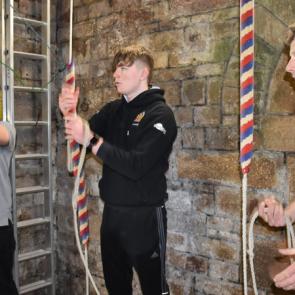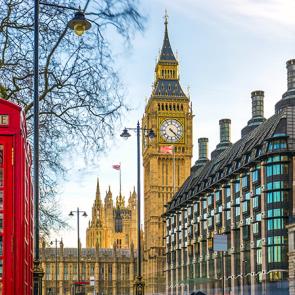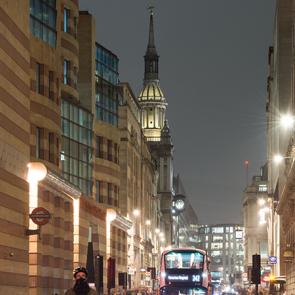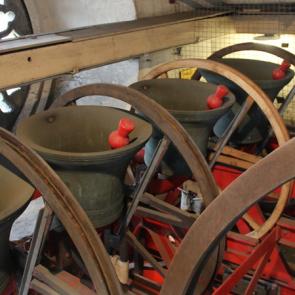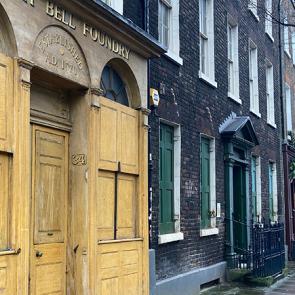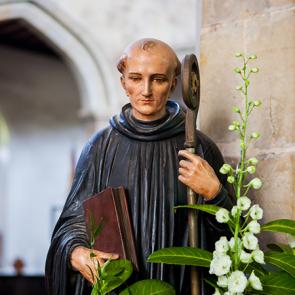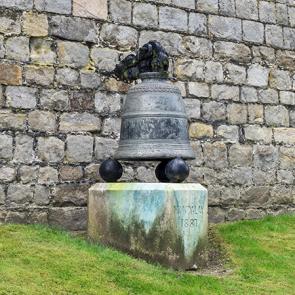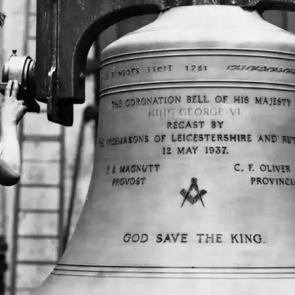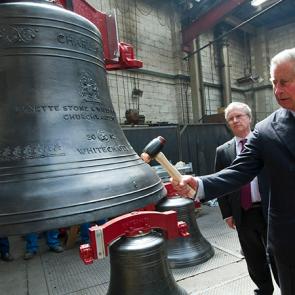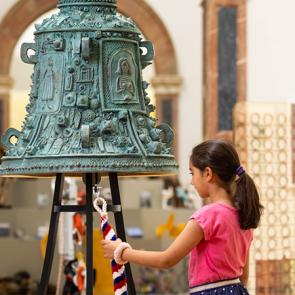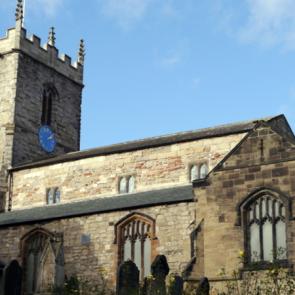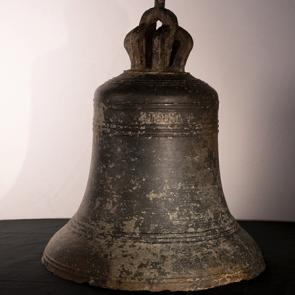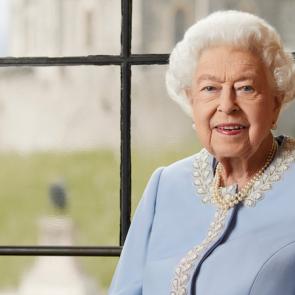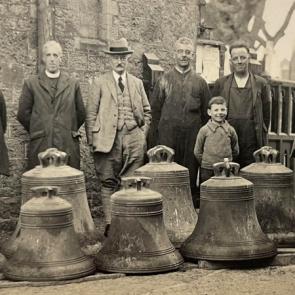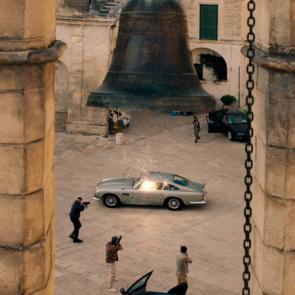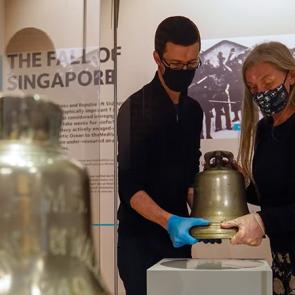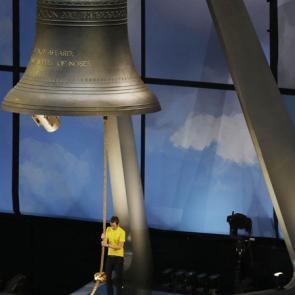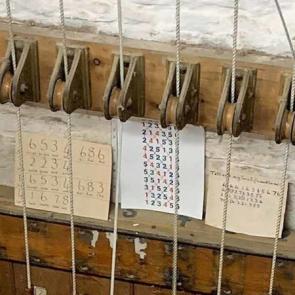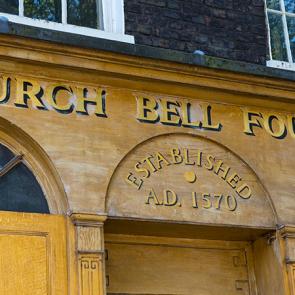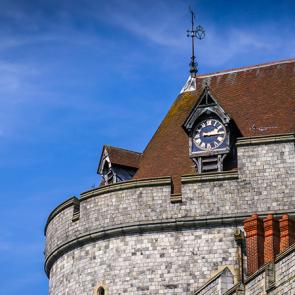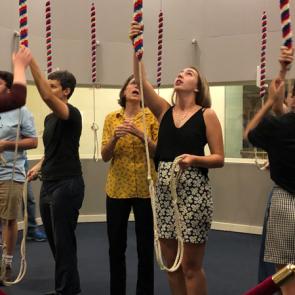United Kingdom
Discover the rich heritage of bell ringing in England, Scotland, Wales, and Northern Ireland.
“The isle is full of noises…”
William Shakespeare
Image: Her Majesty Queen Elizabeth II on an historic visit to see the workings of the Whitechapel Bell Foundry in east London on March 25, 2009.
Picture: Adrian Dennis
Can’t stop the pealing.
The origins of what we call change ringing lie in the 16th century in England when church bells began to be hung with a full wheel – enabling the bell to swing in a full circle and back again. This gave ringers control of their bell, which allowed sets of bells (rings) to be rung in a continuously changing pattern. Music is created by moving bells up and down the ringing order to a defined sequence known as a method.
See change ringing in action.
Hear the bells of Liverpool Parish Church (Pier Head) as rung by the Birmingham 12-Bell Band.

The Central Council of Church Bell Ringers is the global representative body for all who ring bells in the English tradition with rope and wheel.
123 days
Time it would take, ringing continuously day and night, to ring all the possible mathematical permutations on a set of 10 bells.
40,000 people
Number of British bell ringers who work the ropes at the nation’s more than 5,000 change ringing towers.
2 years
Length of the ban on bell ringing in Great Britain during WWII, when bells were not to be rung except in the event of a German invasion.
Notes from Her Excellency the British Ambassador
Dame Karen Pierce reflects on bells and bell ringing.
Image © The Times
Carillons & Chimes
There are 14 carillons across England, Scotland, and Northern Ireland (and one more in the Republic of Ireland). One of the largest in the UK is the 48-bell Bournville Carillon, commissioned as a gift to the workers at chocolate giant Cadbury.

Sing with all the voices of the mountain.
Hear ‘Colors of the Wind’ from Disney’s Pocahontas on the bells of the Loughborough Carillon and War Memorial.
What is a carillon?
A carillon is a musical instrument of bells. Typically housed in a purpose-built bell tower or belfry, a carillon consists of at least 23 harmonically-tuned bells operated by an intricate system of internal clappers or external hammers. An instrument with 8 to 22 bells is called a chime. Much like an organist, a carillonist can create chords, harmonies, and melodies on their instrument – sending elegant tunes wafting across the rooftops.
Bell Foundries
Since at least the 7th century, bells have sounded over the British Isles. Independent craftsmen set up bell foundries not only in large towns, such as London and Gloucester, but also on site as they traveled from church to church to cast bells for rising towers. Today, British bells are exported to countries near and far, and are heard by millions of people around the world every day. Sadly, with the recent closure of the Whitechapel bell foundry in East London, only one major bell foundry remains.
Explore the last major bell foundry in the UK and Commonwealth: John Taylor & Co.
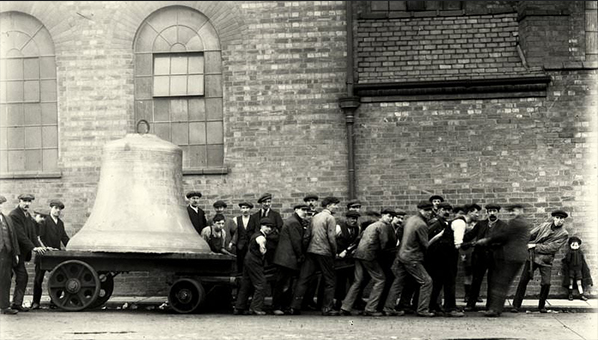
Image: Workers from the John Taylor & Co. bell foundry pull the 6-ton bourdon bell for a new chime of 10 bells at Yale University, 1922. Courtesy: John Taylor & Co.
Great Bells
The United Kingdom is home to some of the best known and most magnificent sounding bells in the world.
Olympic Bell
Olympic Bell
The heaviest tuned bell in the world, cast for the 2012 Olympic Games
Weight: 50,508 lbs.
Tone: B
Cast: 2012
Great Paul
Great Paul
The largest bell cast in the British Isles, hanging at St. Paul’s Cathedral, London
Weight: 37,483 lbs.
Tone: Eb
Cast: 1881
Big Ben
Big Ben
The great bell which lends its name to the Elizabeth Tower at the UK Parliament
Weight: 30,339 lbs.
Tone: E
Cast: 1858
Great George
Great George
The bourdon bell at Liverpool Cathedral, which took 11.5 hrs. to lift into place
Weight: 33,098 lbs.
Tone: C#
Cast: 1940

